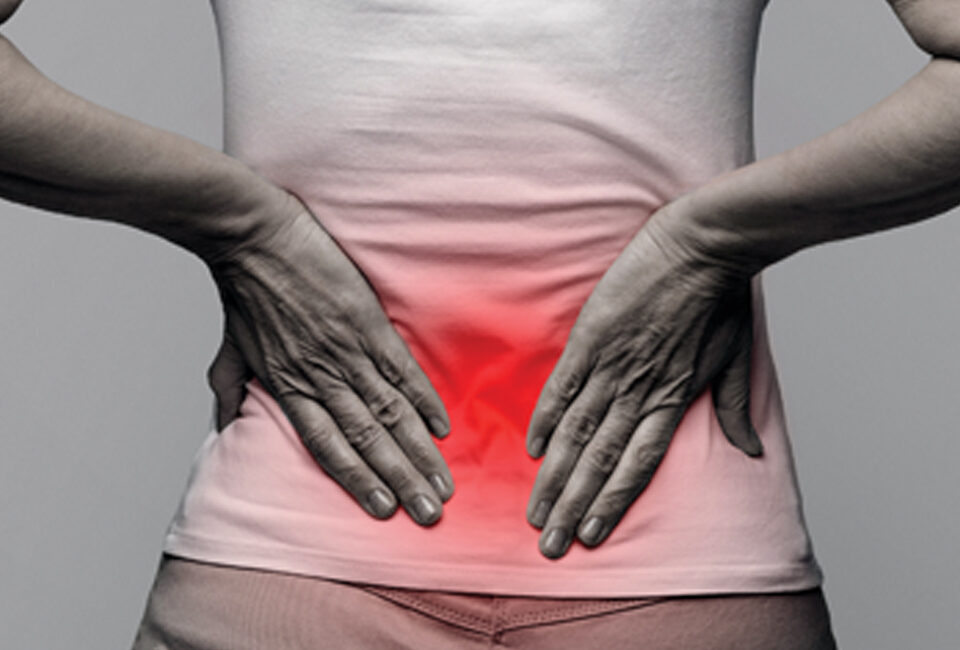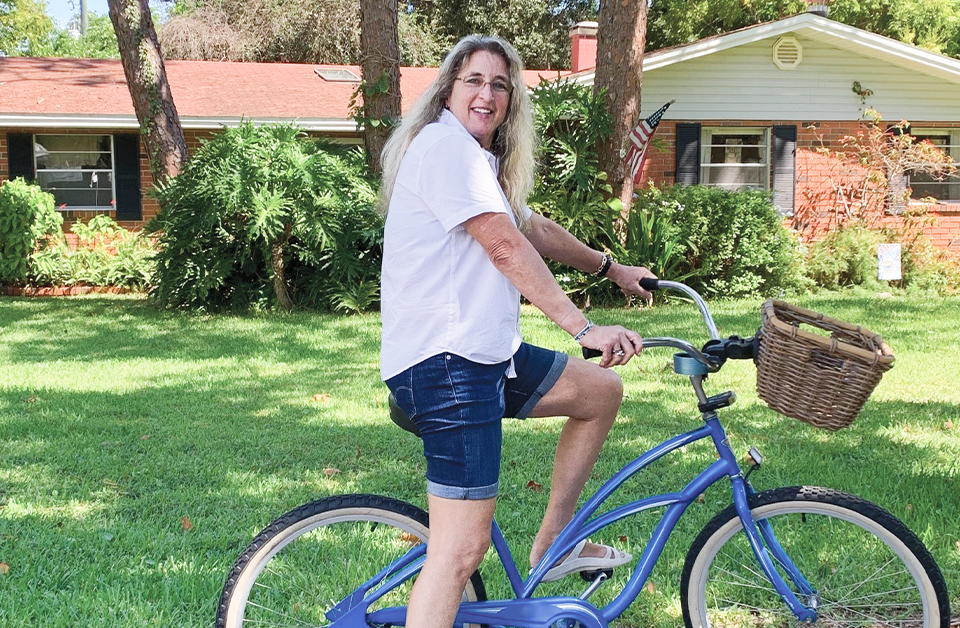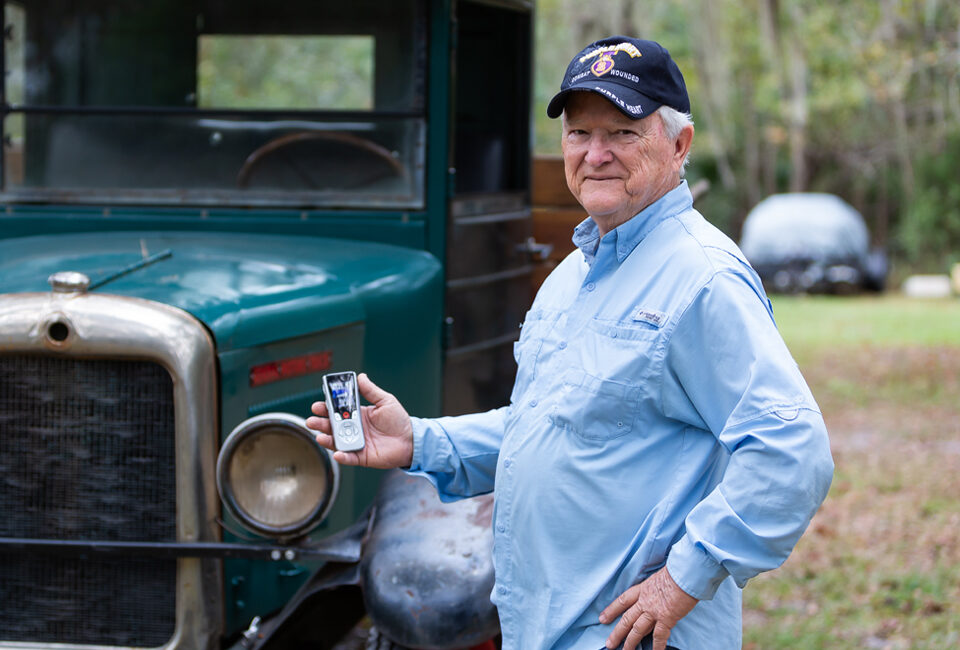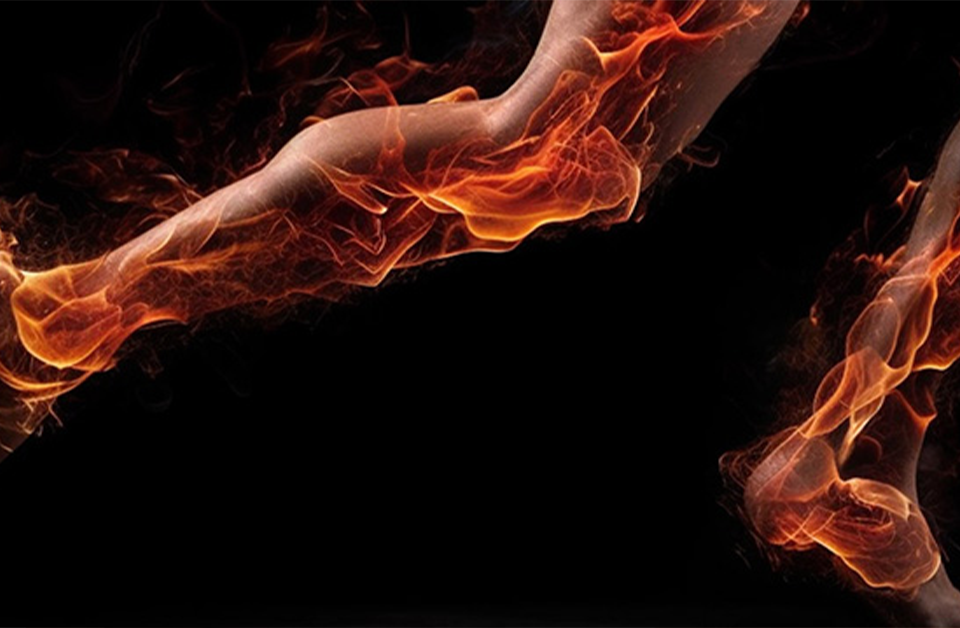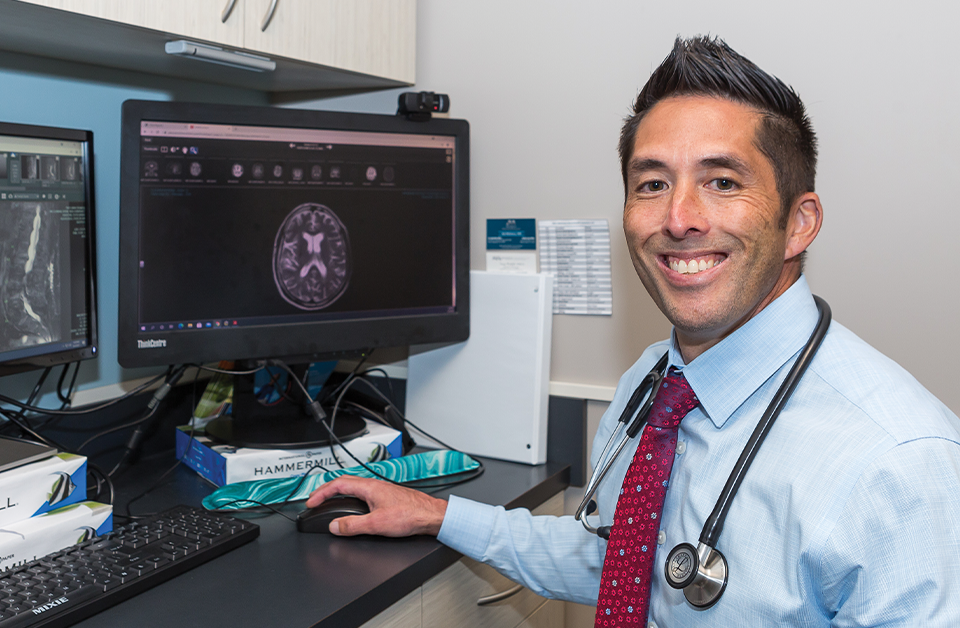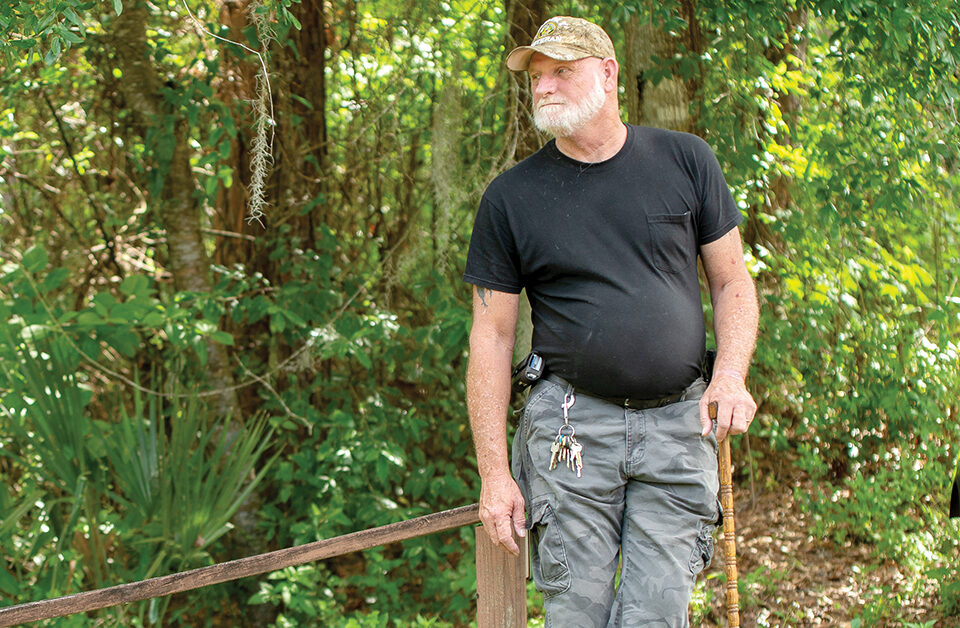

Edward* began his career in the food service industry at a young age. After dropping out of school, Edward went looking for a job. He found one washing dishes at a New York City restaurant. At one point, Edward went from dishwasher to restaurant manager, but his first love was the kitchen.
“I learned how to cook on the job,” shares Edward, 61. “I worked as a cook at Rockefeller Center in New York for about 20 years.”
But one fateful day in October 1996, while he was on his way to work, Edward was severely injured in a bus accident. The incident altered the course of his life. It ended his career and his life without pain.
“I was going to work at Rockefeller Center from The Bronx,” Edward recounts. “The bus driver was speeding, and I was being bounced and tossed around in the back of the bus. A seat cushion came loose, and something hard hit me in my lower back. I couldn’t go back to work because of the injury, so I’m now on disability.”
Unable to work, Edward relocated to his favorite vacation spot in Florida: St. Augustine, where he’s become heavily involved with his church, Tabernacle Missionary Baptist.
“These days, I’m pretty much focused on serving the Lord,” Edward reveals. “I go to church whenever possible, whenever I can sit through a service. I read a lot of Scripture, attend Sunday school, and sometimes I preach God’s word. I participate in other activities at church as well.”
Unfortunately, Edward’s back pain often interfered with his best intentions.
“The pain was severe,” he reports. “It ran from my back down my left leg, and it was bad. On a scale of one to 10, it was a seven or eight. In 2019, my primary care doctor sent me to Dr. McGreevy. He wanted Dr. McGreevy to take a look at me and see if he could help me.”
Kai McGreevy, MD, is a board-certified neurologist and pain management specialist and the founder of McGreevy NeuroHealth, which has offices in Palm Coast and St. Augustine. Dr. McGreevy uses the most advanced treatment modalities to restore his patients’ neurological deficits and ease their pain.
“Edward came to us complaining of low back pain,” Dr. McGreevy recalls. “An MRI showed that he had a disc herniation at L4-L5 in his lumbar spine, and it was contacting the L4 nerve root, which manifested as leg pain. He struggled with pain despite having surgery and was seeking alternative treatments. We treated him with epidural injections and other modalities.”
The lower back is made up of five lumbar vertebrae, labeled with an “L” and numbered top to bottom. L4 and L5 are the two lowest lumbar vertebrae, located at the waistline.
“The injections Dr. McGreevy gave me helped a lot,” Edward confirms. “I wasn’t experiencing any pain. He was fixing me up and I was feeling better. Then, on New Year’s Eve someone rear-ended me. It knocked everything Dr. McGreevy had fixed out of place, and I started feeling pain again.
“This time, the pain went down my leg and into my left foot. There was tingling and numbness in my foot, and I couldn’t walk for long periods of time. I would do a little walking and then I’d be dragging my left foot because it was so painful. I had to use a wheelchair to get around in stores and other places. And the injections did not help my foot pain.”
Dr. McGreevy determined that Edward had developed neuropathy in his left foot. Neuropathy is a painful condition affecting more than 20 million Americans. It results from damage to the peripheral nerves that run from the central nervous system – the brain and spinal cord – to the rest of the body. The most common symptoms are numbness, prickling and tingling in the feet or hands.
There are many potential causes for neuropathy, Dr. McGreevy asserts. These include diabetes, vascular problems and trauma.
Nerve Entrapment
As 2020 moved forward, Edward became increasingly miserable due to the neuropathy pain in his left foot. He exhausted all conservative measures, including several courses of physical therapy. Ultimately, Edward turned back to Dr. McGreevy for help.
“At the time, COVID-19 prevented elective procedures, but Edward was suffering quite a bit,” Dr. McGreevy remembers. “We had to examine him to understand the pattern of his pain. We proceeded to perform a diagnostic ultrasound and identified fascial nerve entrapment of his superficial peroneal nerve, a sensory nerve that supplies the top surface of the foot.
“This nerve entrapment was mimicking his L4-L5 pain pattern, causing pain down his leg and neuropathy in his foot. Edward had some risk factors for vascular disease as well. We ran several tests to rule out any specific blood flow issues going into his lower extremity, and those tests turned out normal.”
Having done his due diligence in evaluating the cause of Edward’s pain, Dr. McGreevy decided to perform a diagnostic nerve block to confirm that the pain arose from the superficial peroneal nerve entrapment. Edward received significant pain relief from the nerve block. But nerve blocks are temporary. To alleviate Edward’s pain over the long term, Dr. McGreevy recommended peripheral nerve stimulation.
No Signals, No Sensation
Similar to spinal cord stimulation, peripheral nerve stimulation involves the placement of a small electrode near the nerve targeted for treatment. The electrode is placed underneath the skin and within a few millimeters of the nerve.
“When turned on, the electrode delivers pulses of high-frequency electrical stimulation that essentially halts the pain signals in that nerve and prevents the signals from traveling toward the spinal cord and up to the brain,” Dr. McGreevy explains. “If there’re no pain signals, there’s no pain sensation.”
Unlike spinal cord stimulation, peripheral nerve stimulation does not require a battery implanted near the hip. The technology is so sophisticated that the workings of electrical stimulation are inherent within the lead placed inside the leg.
“There is an external, wearable antenna assembly, which is very soft and easy to hide under the clothes,” Dr. McGreevy explains. “This powers the stimulator beneath the skin. It powers the receiver, which is made of a very fine material and is located within the electrode itself.”
The peripheral nerve stimulator is controlled by the patient using a handheld remote. This signals the external antenna assembly to send electrical pulses through the implanted electrode to the targeted peripheral nerve to block pain signals.
Dr. McGreevy recommends peripheral nerve stimulation for multiple nerve entrapment conditions, including those affecting the arm, shoulder, lower back, sacroiliac joint and even the knee following surgery. He uses it to treat foot and ankle pain as well.
“Before the peripheral nerve stimulator is implanted, patients are given a trial run to determine if they will experience significant pain relief with an implanted electrode,” Dr. McGreevy informs. “A stimulator trial is considered successful if patients report at least 50 percent pain relief.
“Edward received greater than 80 percent pain relief and was enthusiastic about finally getting a permanent solution to his pain problem. We proceeded with the implantation and he experienced greater than 80 percent relief from the permanent stimulator as well.
“It’s very gratifying to offer safe treatments and see patients receive significant benefits that are lasting. This technology may have far-reaching effects for other conditions involving peripheral nerves down the line.”
Challenges Faced
Fitzhugh “Bo” Medlin was born in Wilmington, North Carolina, but his family relocated to upstate New York in the early 1960s, so he considers Rochester “home.” It’s where Bo grew up, where he went to grammar school and high school, and where he learned and practiced his profession.
“In high school, people came to my school, gave a demonstration and talked about careers in heating and air conditioning,” he remembers. “I signed up, took the test and qualified for the program. I worked myself up from an apprentice all the way to project manager.”
According to Bo, 70, working in the HVAC business isn’t easy. Technicians must know about multiple heating and air-conditioning brands to proficiently repair broken units and intelligently recommend new models. The job got even tougher as he advanced.
“As project manager, I had to know the technical part of the job and deal with the customers,” Bo recounts. “Fortunately, I love being around people. During my 36 years in the business, I worked on some big projects, such as convention centers, hospitals, airports and corporate headquarters. It was quite challenging.”
Bo retired in 2006 and moved to Florida, “because you don’t have to shovel sunshine.”
“I like retirement,” Bo confesses. “My wife is also retired, and we go to a variety of places. We plan out what we want to do with our day and often something comes up, then something else comes up, and we’re going all the time.
“It’s been a good retirement, so far. I’m enjoying it. I love Florida. I like meeting people, doing new things and going places. But sometimes, there just isn’t enough time in the day to do what we want to do. It sounds funny, but it’s true.
“I like to golf for fun. It’s funny, though. When I lived in New York, I golfed a lot. But since I retired, I golf just once a week.”
In New York, Bo was a member of a golf club, which explains his frequency on the links. In Florida, he doesn’t hold any memberships, and there are other activities he pursues during his free time.
Another reason Bo cut back on golf: He was experiencing intense discomfort in his feet.
“There was tingling and burning, and my feet felt numb,” Bo describes. “It was at the point that I could walk on little stones or step on a kid’s toy in the house and I wouldn’t feel it. The degree of discomfort in my feet rated an eight or nine on a scale of one to 10.”
Like Edward, Bo was diagnosed by his doctor with neuropathy in his feet.
“The neuropathy bothered me most at night, especially around bedtime,” Bo reports. “Sometimes, I actually got up and walked around the house for a while to get myself back on my feet again. The burning and tingling were worse when I lay down.
“My podiatrist told me there wasn’t much she could do. She said I more or less had to live with it. I asked my primary doctor, and he said, I think you should visit Dr. McGreevy. That’s the best decision I made.”
Scar Tissue Sensitivity
“Mr. Medlin initially presented to us back in 2018,” Dr. McGreevy recalls. “At that time, he was suffering from severe low back pain that radiated down the back side of his left leg. An MRI revealed an L5-S1 disc bulge and he underwent surgery, which reduced his pain and improved his functioning.”
S1 is the first vertebra of the triangle-shaped sacrum, located between the hip bones. L5-S1 identifies the lumbosacral joint, an area of the lower back that receives a high degree of stress.
“Mr. Medlin returned to us in early 2021 complaining of left foot pain accompanied by numbness, tingling and burning,” Dr. McGreevy explains. “The distribution of his symptoms was different than a typical L5-S1 pattern. We performed an EMG nerve conduction study, which confirmed neuropathy involving lower extremity nerves, instead of radiculopathy from the spine.”
Bo’s nerve conduction study showed damage to his sural nerve, which supplies the side of the foot, and peroneal nerve. The side and top of the foot are where Bo was experiencing discomfort.
“We used diagnostic ultrasound to look further at Mr. Medlin’s lower extremity nerves,” Dr. McGreevy details. “We discovered that his peroneal and sural nerves were entrapped within the fascial planes.”
Fasciae are connective tissue that normally cover and protect the nerves. But for reasons not clearly understood, these tissue fibers can become inflamed and scarred.
“Nerves are very sensitive to nearby structures such as scar tissue,” Dr. McGreevy contends. “Under ultrasound, we identified an enlargement of the nerve just before the entrapment. This identification lends even more support to a peripheral nerve problem, rather than a spine problem, as the cause for Mr. Medlin’s symptoms.”
As he did with Edward, Dr. McGreevy performed a diagnostic nerve block on Bo, who achieved greater than 80 percent pain relief. As a result, Dr. McGreevy recommended peripheral nerve stimulation for Bo as well.
“No Pain Whatsoever”
Bo’s peripheral nerve stimulator trial was a huge success. He reported greater than 80 percent pain relief with improved functioning. He opted to proceed with the implantation of the stimulator electrode.
“Dr. McGreevy told me right up front that the stimulator might not cure my neuropathy 100 percent,“ Bo reveals. “He said there might be a little pain here and there, but the device should reduce my pain by 50 percent. But what it’s doing for me is more than 50 percent. Before, my discomfort was an eight or nine. Now, it’s down to a two or three.
“The stimulator is a great device. I turn it on for a couple of hours in the morning or late in the evening if I have pain, or if I’m going to be doing a lot of walking, like at the mall, and it relieves the pain.” Edward has had a similar response to his peripheral nerve stimulator.
“It’s working great,” he reports. “I can walk now, so I don’t need to use the wheelchair to get around. Where my pain level used to be a seven or eight, it’s now a two or three. And I can do a lot of things without feeling any pain in my foot.
“The overall procedure and being at the surgery center were great, too. I had a wonderful experience. The staff checked on me regularly to see if I needed anything. They treated me well. They were all concerned about how I felt.”
Bo’s electrode was implanted in his left foot, which had more pain than his right. As soon as insurance authorizes the procedure, he plans to have the device placed in the other foot.
In the meantime, he’s enjoying the benefits of his procedure.
“The numbness and tingling have been reduced big time in my left foot,” Bo enthuses. “Once in a while, I get a little tingling, but the pain’s not there, the discomfort’s not there. Right now, I have no pain whatsoever in my left foot, so I can sleep at night.
“Dr. McGreevy has done his job well. He’s a good person and a good doctor. I can tell by the way he takes care of me. He truly cares about his patients.”
Edward also has good things to say about the neurologist.
“Dr. McGreevy is a phenomenal doctor,” Edward raves. “He did a wonderful job. He broke down everything for me. He told me step-by-step what’s going to happen and what to look for. And he was encouraging. He told me, I’m going to take care of you. I’m going to take care of your left foot so you’ll be able to walk without severe pain.
“He’s a great doctor. He got me up and running. I wouldn’t go anywhere else.”






